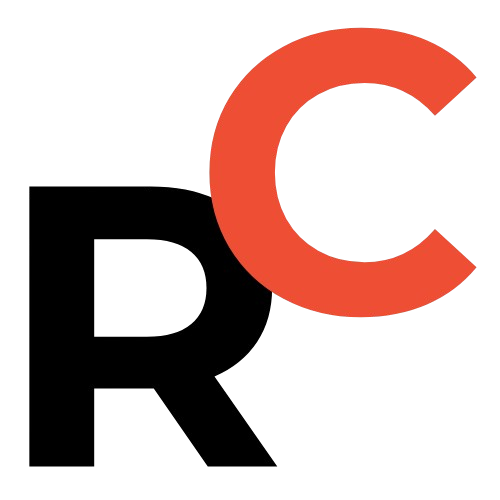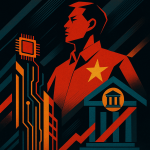Key Points
- AI glasses surge: Global smart‑glasses shipments rose about 110% year‑over‑year (H1 2025), with AI smart‑glasses making up ~78% of the market (H1 2025).
- Smartphone weakness: Overall consumer‑electronics recovery is uneven—global smartphone shipments fell 1% YoY (Q2 2025), while China’s market slipped ~4% YoY and domestic shipments (Jan–May) were ≈118 million (-2.8% YoY).
- Supply‑chain winners: Optics and precision assembly suppliers are major beneficiaries, with suppliers like 蓝思科技 (H1 net profit ¥11.43亿元) and 歌尔股份 (H1 net profit ¥14.17亿元) reporting AI‑driven gains.
- Big‑player gains & AI capex: Leaders tied to AI demand saw strong H1 results—e.g., 工业富联: revenue +35.58% YoY, net profit +38.61% YoY—reflecting AI infrastructure‑driven demand.

AI glasses are the breakout category reshaping the consumer‑electronics (xiaofei dianzi 消费电子) value chain in 2025.
Summary
As AI moves from concept to necessity, the consumer electronics sector is splitting into clear winners and losers.
Global smartphone shipments remain weak, while AI‑enabled products—especially AI glasses (AI yanjing AI眼镜)—are surging.
Upstream materials, optics and precision assembly suppliers are among the biggest beneficiaries.
Several industry leaders reported strong first‑half results directly tied to AI demand.

Resume Captain
Your AI Career Toolkit:
- AI Resume Optimization
- Custom Cover Letters
- LinkedIn Profile Boost
- Interview Question Prep
- Salary Negotiation Agent

Market: mixed signals across sub‑sectors
Overall recovery signals in consumer electronics are still fragile.
Canalys reported the global smartphone market fell 1% year‑over‑year in Q2 2025—the first decline in six quarters.
China’s smartphone market slipped about 4% year‑over‑year as earlier stimulus effects faded.
China’s Ministry of Industry and Information Technology equivalent data shows domestic phone shipments of about 118 million units in January–May 2025, down roughly 2.8% year‑over‑year.

AI glasses emerge as the new growth engine
In stark contrast to smartphones, smart glasses are experiencing explosive growth.
Counterpoint Research data indicate global smart‑glasses shipments in H1 2025 rose about 110% year‑over‑year.
AI smart‑glasses accounted for roughly 78% of the global smart‑glasses market in H1 2025—up from 46% in H1 2024 and 66% in H2 2024.
Analysts describe this shift as moving from incremental upgrades to an experience revolution—similar to the jump from feature phones to smartphones.
AI glasses, VR/AR and other smart wearables (zhinan chuan dai 智能穿戴) are expected to be key sources of new demand.
Several supply‑chain companies specifically noted AI glasses as a growth driver in their earnings reports.
- Lens Technology (蓝思科技): ¥11.43亿元 ($156.7 million USD)
- GoerTek (歌尔股份): ¥14.17亿元 ($194.1 million USD)

Find Top Talent on China's Leading Networks
- Post Across China's Job Sites from $299 / role, or
- Hire Our Recruiting Pros from $799 / role
- Qualified Candidate Bundles
- Lower Hiring Costs by 80%+
- Expert Team Since 2014
Your First Job Post

Selected company updates tied to AI demand
-
Lens Technology (Lanshi Keji 蓝思科技) reported first‑half net profit attributable to shareholders of ¥11.43亿元 (¥1.143 billion RMB / $156.7 million USD).
The company said it improved waveguide lens yields and high‑precision automated assembly, enabling large‑scale deliveries of complete AI‑glasses units for leading domestic customers.
-
GoerTek (Ge’er Gufen 歌尔股份) reported first‑half net profit attributable to shareholders of ¥14.17亿元 (¥1.417 billion RMB / $194.1 million USD).
The firm said its precision components and smart‑hardware divisions—especially AI smart glasses and wearable products—made steady progress.

ExpatInvest China
Grow Your RMB in China:
- Invest Your RMB Locally
- Buy & Sell Online in CN¥
- No Lock-In Periods
- English Service & Data
- Start with Only ¥1,000

AI drives strong results for industry leaders
Large models and generative AI are accelerating ecosystem expansion and boosting demand across the supply chain, from materials to high‑end servers.
Several leading manufacturers posted notable gains in H1 2025 tied to that demand.
-
Foxconn Industrial Internet (Gongye Fulián 工业富联) reported H1 2025 revenue of ¥3,607.60亿元 (¥360.76 billion RMB / $49.44 billion USD), up 35.58% year‑over‑year.
The company reported net profit attributable to shareholders of ¥121.13亿元 (¥12.113 billion RMB / $1.66 billion USD), up 38.61%—both record highs for the period.
Foxconn attributed part of the growth to surging demand for AI infrastructure and related products driven by cloud providers’ expanding AI capex.
-
Wind data showed 11 companies in the consumer‑electronics segment exceeded ¥100亿元 in revenue in H1 2025.
Examples include:
-
Luxshare Precision (Lixun Jingmi 立讯精密): ¥1,245.03亿元 (¥124.503 billion RMB / $17.06 billion USD)
-
Huaqin Technology (Huaqin Jishu 华勤技术): ¥839.39亿元 (¥83.939 billion RMB / $11.50 billion USD)
-
GoerTek (Ge’er Gufen 歌尔股份): ¥375.49亿元 (¥37.549 billion RMB / $5.14 billion USD)
-
Lens Technology (Lanshi Keji 蓝思科技): ¥329.60亿元 (¥32.96 billion RMB / $4.52 billion USD)
-
- AI phone hardware upgrades and penetration.
- New AI wearable form factors.
- Optical-industry capacity and specification upgrades.

Why AI is reshaping the value chain
End‑user AI is moving into close‑to‑body scenarios—AR glasses (AR yanjing AR眼镜) and personal wearables—where user experience is the battleground.
The competitive landscape includes ecosystem integration—payments, navigation, OS, and chips—and new interaction modes like vision, audio and environment sensing.
Strategic investments by device brands, chipmakers and software/app players are creating an AI innovation cycle across phones, PCs, wearables, robots and XR (extended reality) devices.
Broker and research houses recommend watching three investment themes in the coming months:
-
AI phone hardware upgrades and penetration.
-
New AI wearable form factors.
-
Optical‑industry capacity and specification upgrades.

Actionable takeaways for investors, founders and builders
-
Focus on upstream optics and precision assembly suppliers.
These companies are already seeing direct demand from AI glasses and smart‑wearable makers.
-
Watch AI infrastructure capex trends from cloud providers.
Demand for servers and high‑margin components can be a leading indicator of broader hardware strength.
-
Evaluate wearables beyond incremental specs.
Invest in products that enable new interaction modes—vision, audio, sensing—rather than just faster chips.
-
Prioritize ecosystem plays.
Companies that integrate hardware, software and services will have defensible moats as AI experiences become stickier.

Outlook
As AI features and experiences become differentiators, companies tied to AI hardware, optics and precision assembly stand to gain.
However, the broader consumer electronics recovery remains uneven—smartphone weakness persists even as new AI categories create pockets of rapid demand.
For investors and operators focused on Chinese tech, watching shipment mixes, supply‑chain orderbooks and AI capex flows will separate short‑term noise from durable trends.
Note: All RMB→USD conversions above are approximate and rounded.
Linking opportunities (suggested anchor text for internal or partner links)
-
AI glasses market
-
smart wearables
-
AR glasses ecosystem
-
optics and precision assembly suppliers
-
AI infrastructure capex
Quick SEO checklist
-
Use primary keyword “AI glasses” in title, first paragraph and last paragraph.
-
Include semantic keywords: consumer electronics, smart wearables, optics, precision assembly, AI hardware.
-
Publish internal links using the suggested anchor text above to distribute topical relevance.
-
Keep meta description focused on AI glasses as the new growth engine for consumer‑electronics suppliers.
Conversion note: Conversions use an assumed rate of ¥7.30 = $1.00 (approximate) on 2025.09.03.
AI glasses remain the headline theme driving winners across the consumer‑electronics value chain.




![China's MIIT Signals Major Push for General and Industry-Specific AI Large Models [FreshFromChina]](https://freshfromchina.com/wp-content/uploads/2025/05/China_s_MIIT_Signals_Major_Push_for_General_and_Industry-Specific_AI_Large_Models____FreshFromChina-150x150.png)

